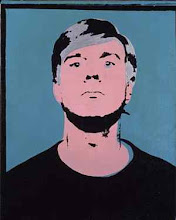 |
| Rankin, Nancy Ekidor, 38, holds a day's worth of food in her the palms of her hands, 2011 (Oxfam) |
It is tragic, and shaming, that famine has been for so long, and continues to be, a staple of photojournalism - below are some examples from both current and past crises. Apart from the simple injustice that in a world with so much wealth and knowledge, so many still go hungry, it is tragic that so-called 'natural' disasters, are so often the product of politics and economics.
The photographic representation of such suffering raises profoundly difficult and unsettling ethical issues - from the apparently indifferent and de-humanizing gaze of the camera to the aestheticizing of suffering, from the dangers of sentimentality to the boredom of 'compassion fatigue'. Nevertheless, photojournalists do an important and brave job in telling their stories and raising awareness.
Below is Don McCullin's 1969 picture of an albino child in Biafra, together with his account of the experience given in his book Unreasonable Behaviour.
As I entered [the camp] I saw a young albino boy. To be a starving Biafran orphan was to be in a most pitiable situation, but to be a starving albino Biafran was to be in a position beyond description. Dying of starvation, he was still among his peers an object of ostracism, ridicule and insult…The boy looked at me with a fixity that evoked the evil eye in a way which harrowed me with guilt and unease. He was moving closer. He was haunting me, getting nearer. Someone was giving me the statistics of the suffering, the awful multiples of this tragedy. As I gazed at these grim victims of deprivation and starvation, my mind retreated to my own home in England where my children of much the same age were careless and cavalier with food, as Western children often are. Trying to balance between these two visions produced in me a kind of mental torment…I felt something touch my hand. The albino boy had crept close and moved his hand into mine. I felt tears come into my eyes as I stood there holding his hand. I thought, think of something else, anything else. Don’t cry in front of these kids…He looked hardly human, as if a tiny skeleton had somehow stayed alive…If I could, I would take this day out of my life, demolish the memory of it.
Don McCullin made his name as a war photographer: in Sleeping with Ghosts, he refers to his experience in Biafra as life-changing:
I was devastated by the sight of 900 children living in one camp in utter squalor at the point of death. It completely changed my attitude to warfare. Here was no adventure or stage for heroism. I could not reconcile this experience with my family life at home. I lost all interest in photographying soldiers in action and wanted only to show the world the result's of man's inhumanity to man.
(A selection of work by McCullin is currently on display in Tate Britain; read an interview by Sean O'Hagan.)
Below is a small selection of photographs of famine and its victims, past and present.
 |
| Sebastiao Salgado, Untitled, Mali, c1985 |
 |
Kevin Carter, Starving Child in Sudan, 1993 |
 |
| James Nachtwey, Sudan, 1993 |
 |
| Robin Hammond, An aerial view of the drought-stricken land of Puntland, in Somalia, 2011 |
 |
| Colin Crowley, Bishar Hassim, a pastoralist who has lost all his livestock, stands over a dead cow in Jowhar village, in Wajir, Kenya, 2011 (Save the Children) |
 |
| Per-Anders Pettersson, Dilmanyale, around 14 miles from Habawswein, in Kenya, July 2011 (Save the Children) |
 |
| Robin Hammond, Having lost all her cattle to the drought and one child, Raha Abdi Nor brought her surviving children to Banadir Hospital in Mogadishu where they are being treated for severe malnutrition, 2011 |
 |
| Rankin, Adorn Gikaala, 46, Turkana in Kenya (Oxfam) |
 |
| Rankin, Flomena Aslkon, 14, holding a day's worth of food in the palms of her hands, 2011 (Oxfam) |













No comments:
Post a Comment